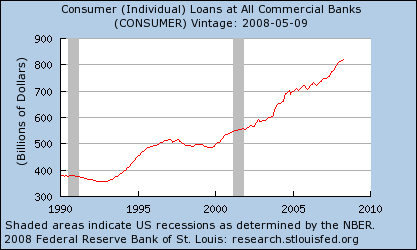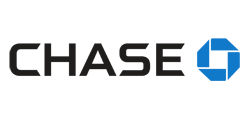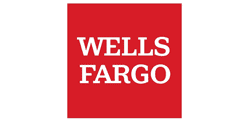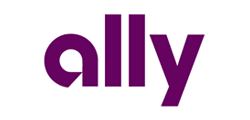
Types of bank accounts in the United States
The proper handling of money is a subject that lends itself to a heated debate on the most appropriate means to manage our resources. The complication of the matter lies in the need or not to have a bank or credit union for this purpose.
Article content
- Savings accounts
- Checking accounts
- Money Market accounts
- Certificates of Deposit (CD)
- Retirement Accounts (Individual Retirement Account)
Leaving aside the preferences, the occasion is propitious to review the types of accounts in the United States. A simple way to understand which banking product is most appropriate for your interests or needs is to know what the main types of bank accounts are for.
In the USA, as in all countries that have a financial system, this is no greater mystery. The dilemma for anyone is simply choosing the institution with the best conditions.
 Advantage SafeBalance Banking AccountChecking account without checkbook, with debit card and digital wallet. So you can manage your money easily and without overdraft fees.More infoRequest
Advantage SafeBalance Banking AccountChecking account without checkbook, with debit card and digital wallet. So you can manage your money easily and without overdraft fees.More infoRequest Chase Total Checking AccountFree debit card checking account and the ability to avoid the monthly fee in a number of ways.
Chase Total Checking AccountFree debit card checking account and the ability to avoid the monthly fee in a number of ways.
More infoRequest Everyday Checking AccountChecking account for your day to day with which you can operate using a free debit card and with an easy to avoid handling fee.More infoRequest
Everyday Checking AccountChecking account for your day to day with which you can operate using a free debit card and with an easy to avoid handling fee.More infoRequest Advantage Plus Banking AccountChecking account that has various forms of payment: debit card, Zelle, digital wallet and paper checks if you buy them.More infoRequest
Advantage Plus Banking AccountChecking account that has various forms of payment: debit card, Zelle, digital wallet and paper checks if you buy them.More infoRequest Interest Checking AccountPaid online checking account that does not charge maintenance fees, nor for issuing checks or transfers. Nor does it require maintaining a minimum balance.
Interest Checking AccountPaid online checking account that does not charge maintenance fees, nor for issuing checks or transfers. Nor does it require maintaining a minimum balance.
More infoRequest
In this sense, common reasons for opening a bank account they are usually: saving, earning interest, managing income better, diversifying capital, investing or having different payment options for day-to-day transactions.
That said, North American entities are known to offer 5 basic modalities:
Savings accounts (Savings accounts)
Almost all, in one way or another, are familiar with these simple instruments that are intended to save money for emergencies, projects and other needs, obtaining a return on it.
For most, especially the youngest, savings accounts represent a beginning in the financial world. They should not be used for day-to-day operations, but it is not a written law.
These kinds of accounts are known for offer a monthly or annual interest rate to encourage the good habit of collecting savings. Although these dividends are not high, discipline and years can generate an interesting benefit.
They do not include a debit card and may be subject to certain withdrawal restrictions, such as being able to recover money for free only 6 times a month.
Current or checking accounts (Checking accounts)
 The checking account It has several denominations in financial culture: debit, checking, personal account and even deposit demand (United States). These instruments are designed so that you make your frequent transactions, such as paying bills, writing checks, online transfers, cash withdrawals at ATMs, payroll payments, among others.
The checking account It has several denominations in financial culture: debit, checking, personal account and even deposit demand (United States). These instruments are designed so that you make your frequent transactions, such as paying bills, writing checks, online transfers, cash withdrawals at ATMs, payroll payments, among others.
For this reason, it includes a debit card, an app for mobile banking or the option to pay bills online. It is possible to get this type of accounts with interest, called "high yield”, Which give you an interest rate of 2 to 4% APY.
Very useful for daily management, you have to know how to choose the most appropriate one to avoid the different commissions linked to your hiring.
Money Market Accounts (Money Market accounts)
They work in much the same way as savings accounts. They are named this way because the bank or credit union uses them to invest in low-risk assets, such as government bonds, certificates of deposit (CDs), and more.
They tend to have higher interest rates than current or savings and depend on federal rates.
This class of instruments are not designed for the long term, but they are designed to diversify the profitability of your money. Its advantages are dividends, the use of Debit and the inclusion of checkbook.
Common drawbacks are related to a high minimum deposit ($ 5,000 to $ 10,000), the number of monthly withdrawals allowed (3 or 4), and no rate guarantees.
Certificates of Deposit (CD)
Among all the aforementioned accounts, the CD is the one that allows you to obtain the highest amount of profits by complying with the conditions of the financial institution. This is because you have to commit the money for a specified period, from 6 months to 10 years. You get fixed interest rate dividends when the set time expires.
The "problem" with this product is that you cannot withdraw the capital early, otherwise you will have to pay a fine and you do not receive a profit. The recommendation is to compare the rates offered by banks, look for a CD that is close to the inflation rate and have other savings mechanisms.
Retirement accounts (Individual Retirement Account)
The IRA is the last on this list and functions as a fund to save money for the golden years. Its main advantage is that you do not have to pay taxes for deposits but for withdrawals. This means that the money grows as you pay and the interest accumulates.
There are 2 modalities: traditional and roth. With the first, you pay taxes shortly after retirement and with the second, immediately. You have to be clear about the rules, consult an IRS expert, and know their restrictions well.
For now we do not have for you to compare all the types of accounts in the US that there are, although shortly we will carry out specific comparators for each modality. Still, you can review the most interesting ones in our account comparer.
Leave a Reply
You must be logged in to post a comment.


Tambien puedes leer: